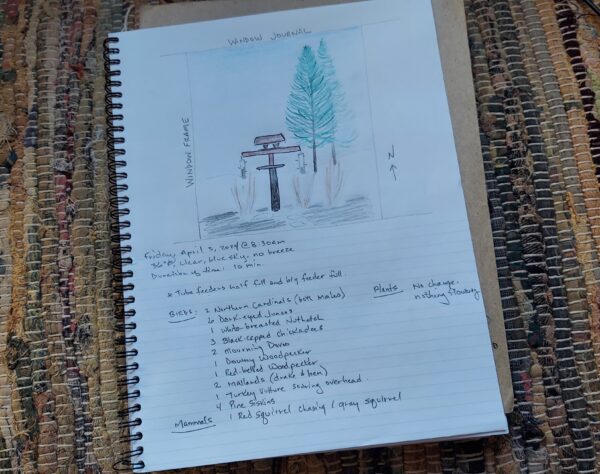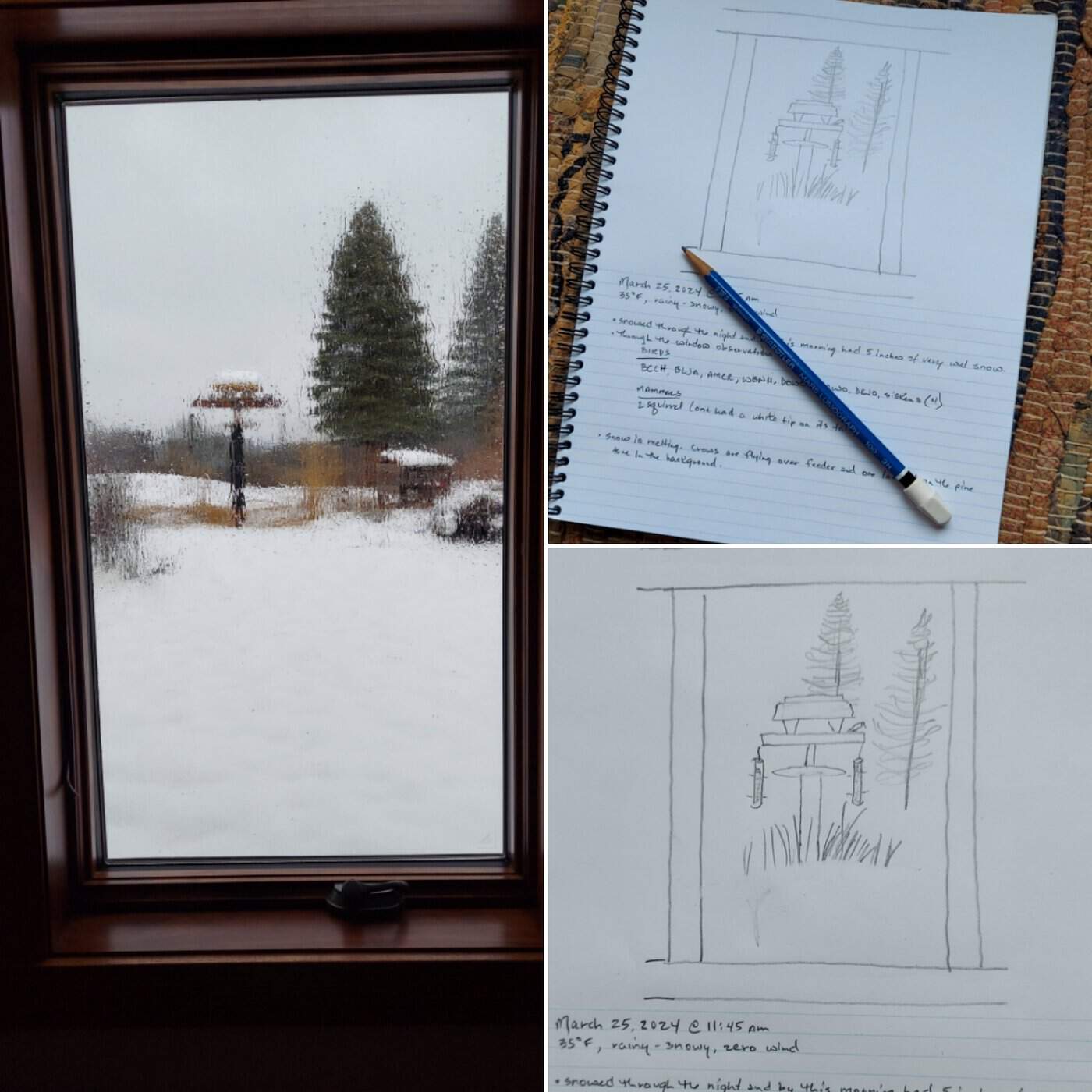Youth Summit 2024 - Virtual Activity 1
Spring represents new beginnings. Transitioning from winter to spring marks a period of renewal--from gray to green landscapes, longer daylight, and wet snowfalls or rain. Nature also begins to awaken, with buds blossoming into vibrant colorful flowers and trees and lawns regaining their green garb, and bird songs filling the air. Embrace the spring season and its energy by putting your student’s observation skills to work by recording signs of spring through a window over the course of five days. After the five days, allow students to share their observations with the class, someone or to a group.
What is needed:
notebook, pencil, crayons or markers, a window to the outside, and five to ten minutes of observation per day for five days.
Here’s what you will need to do.
- Find or make a dedicated notebook or journal to enter your data in. This journal should only be for your window project.
- Find a window. This window should be one you can view out of every day for five days. If a window isn’t an option, get outside and select a bench or a tree at a park, backyard or the school’s playground you can visit every day to observe from.
- Journal entry. Start each day by recording the date and time of your observation followed by the climate conditions. For example, note if it’s a sunny or cloudy day, is it raining or snowing, windy or still, warm or cold in temperature. If it’s cloudy, describe in words what the clouds look like.
- Observation – five to ten minutes daily. While viewing out your window, try to make as many observations as you can about the area. Make a list of everything or just a few of what is seen and/or heard. Record those observations by writing and/or drawing what is being observed. What wildlife do you see (if known)? Record any insects, birds, mammals seen or heard. Where in the landscape are they in – squirrel in a tree or a bird on the ground? Are there plants in view? If so, what are they (if known)? Are they budding, flowering or blooming? Unsure of the species of wildlife or plant? Select one of each and try to describe it in words or draw it to identify it later. And human activity? What are they doing – playing, walking, running, biking, or what? Describe it in words or draw one activity in your journal.
- Additions to your journal entry - if time allows, fill in your daily journal entry by coloring in the details – blue sky, green leaves or grass, etc. Use of watercolor paints or colored pencils or pens are allowed. Remember… you are the author, artist and composer of your work.
- At the end of the week, have students share to the entire class on their findings. They could report back to their classmates by role-playing as a television or radio reporter or weather person. Another way to interpret signs of spring, is to select a plant, animal, or scene of spring and draw it to share with the class. For older students, please answer the following questions:
- Why was the window selected?
- How do you think the area outside your observation window will change in the following time periods? – 24 hours, 1 week, 1 month.
- How could this information be helpful to others?
Observations 1 week later

What changes can happen in one week while looking out a window?
For about ten minutes each morning this week, before heading to work, Ranger Dan spied out his window at home to catch glimpses of signs of spring. Surprisingly within a short period of time, he recorded many observations in his nature journal. Most of the observations include birds at or near the bird feeder including a pair of mallard ducks who waddled past the feeder. Pine Siskins visited the tube feeders while Black-eyed Juncos flirted about on the ground near two large bunches of Switchgrass. One day, a brief chase took place on the ground near the feeder of a red squirrel chasing a gray squirrel. During the week, the browns and grays of the neighboring shrubs and grasses showed no change in appearance even after two days of pure sunshine and blue sky.
On Monday, April 1, we posted an activity for students to observe any signs of spring through their classroom window and record their findings in a journal. In one week, what kind of signs did they observe? Did they notice a change in climate – was it snowing or raining? What animals did they see and what were they doing? Did any flowers bloom during the week? Today, we are asking educators to share their students’ observations using the hashtags #viewoutmywindow and #YouthSummitStCroix for a chance for their observations to be shared on our Facebook page. Any illustrations or drawings of what was observed is greatly appreciated.
Would you like to become a citizen scientist?
A citizen scientist is a member of the public who contributes to scientific research by helping collect or analyze data for researchers who eagerly seek help from others outside of their work environment.
Become a citizen scientist by visiting https://www.usanpn.org/
What is phenology?
Phenology is the study that measures the timing of life cycles of all living things (plants and animals) and how the biological world changes through the seasons like the changes of leaf color, animals waking up from hibernation, or the first frost.


